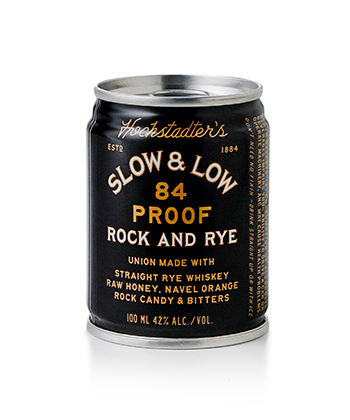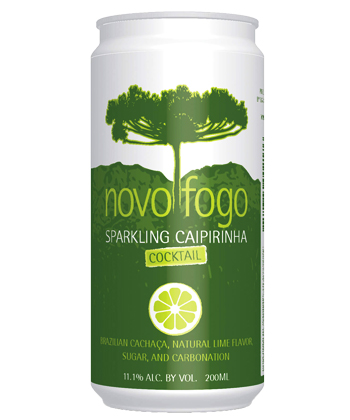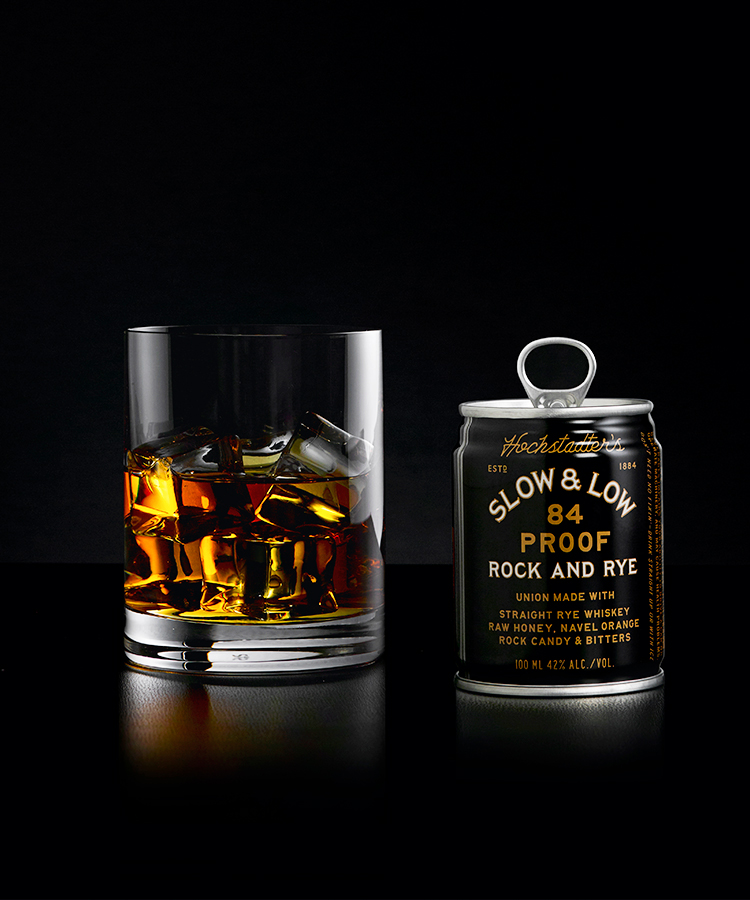It’s been decades since Sex and the City helped launch a cocktail revolution in the 1990s and early 2000s. As a drinking culture, we’ve moved past Carrie Bradshaw and the Cosmopolitan to fresh juices, bar-made bitters, and reinvented classics. Now it’s time for the next step, and certain spirits companies believe that step includes aluminum cans.
For the past 10 years, more and more American spirits companies have been putting pre-made cocktails into cans. There’s Ballast Point Brewery, Cutwater Spirits, and The Cooper Spirits Co., which makes a canned version of the original Rock and Rye pre-made Old Fashioned. And, as of May 4, there’s even a Brooklyn company making a canned Gin & Tonic.
It’s a trend that’s the natural next step in drinking culture, Luke McKinley, the creative director at Novo Fogo, which makes a canned sparkling Caipirinha, tells me in an email. “I see the growing trend of canned cocktails as an extension of the broader popularity of cocktails in modern drinking culture,” McKinley says.
You may laugh, but consider this: People thought the idea of good craft beer in a can was impossible until Oskar Blues came on the scene and proved everyone wrong. Now it seems like every major craft brewer — and a fair number of winemakers — are going aluminum.
So why has it taken so long for spirits companies? For one, rules, regulations, and taxes make it more complicated to put cocktails in cans than it is to put beer or wine in a can. In the United States, the Alcohol and Tobacco Tax and Trade Bureau requires that all liquor in cans come in one of four sizes: 355 milliliters, 200 milliliters, 100 milliliters, or 50 milliliters. Then comes the taxes. All liquor is taxed like a 40 percent alcohol by volume spirit, Can Science News reports, which is higher than taxes on beer and wine — especially when the liquor is a mixed drink, not a 40 percent alcohol by volume spirit.
They’re not much more expensive than batching up your own cocktails. It would cost you around $3.50 to make yourself an Old Fashioned once you’d paid for the shot of whiskey, Angostura bitters, sugar, and orange. Compare that to the Slow & Low Rock and Rye Old Fashioned canned cocktails, which come in 100 milliliter cans, or the size of one standard high proof cocktail (Slow & Low is 42 percent alcohol by volume). The cans retail for around $4 each, so, in the case of the Slow & Low cocktail, you’re paying around 50 cents for the convenience of having a portable cocktail made for you.
The other benefits for consumers is undeniable. For one, there’s the convenience factor.“Simply stated, people are drinking better cocktails in more places, so they expect a certain level of quality for their buck,” McKinley says. Cans can go places that bottles can’t, like beaches that don’t allow glass. Cans are also lighter, so they’re easier to take on the go. Today’s drinkers want those benefits without having to sacrifice quality.
“Consumers are living a more ‘on-the-go lifestyle’ than ever before and they also crave products with heritage and authenticity,” Robyn Greene, the senior vice president of marketing and innovation at The Cooper Spirits Co., tells me in an email. “We introduced Slow & Low in cans to provide a discreet and portable package to enjoy a proper, high-quality Old Fashioned in any environment.”
But in the end, there’s one thing that matters most: taste.
“The convenience of a can is a major factor,” McKinley tells me. “But modern drinkers will ultimately determine the future of the canned alcoholic beverage trend by the quality of the liquid inside.”
The taste test
Hochstadter’s Slow & Low 84 Proof Rock and Rye — $4
 Opening the can is like holding a professionally prepared Old Fashioned under your nose. The orange is immediately apparent, as is the honey and rye whiskey. I tried it straight out of the fridge poured into a glass, without any dilution from an ice cube. It tastes strong, as a rye whiskey cocktail should, with the sugars from the honey and the added rock candy taking a backseat. I’ve had fancier drinks, but the balanced taste is comparable to what you’d expect from a cocktail bar where you paid three times the price.
Opening the can is like holding a professionally prepared Old Fashioned under your nose. The orange is immediately apparent, as is the honey and rye whiskey. I tried it straight out of the fridge poured into a glass, without any dilution from an ice cube. It tastes strong, as a rye whiskey cocktail should, with the sugars from the honey and the added rock candy taking a backseat. I’ve had fancier drinks, but the balanced taste is comparable to what you’d expect from a cocktail bar where you paid three times the price.
Novo Fogo’s Sparkling Caipirinha — $4
 A Caipirinha is a mix of cachaça (a Brazilian drink made from raw sugar cane), sugar, and lime. Novo Fogo’s Caipirinha comes in at 11 percent alcohol by volume in a 200 milliliter can. It’s impossible to can and preserve the full flavor of fresh lime. Novo Fogo’s canned version gets around this by adding carbonation, which also brings the alcohol by volume down to a more manageable day-drinking level. It doesn’t taste like a Caipirinha you’d get at a good bar, or even really a true Caipirinha. The bubbles keep it light, while an immediate taste of raw sugar cachaça and a touch of lime follow it up.
A Caipirinha is a mix of cachaça (a Brazilian drink made from raw sugar cane), sugar, and lime. Novo Fogo’s Caipirinha comes in at 11 percent alcohol by volume in a 200 milliliter can. It’s impossible to can and preserve the full flavor of fresh lime. Novo Fogo’s canned version gets around this by adding carbonation, which also brings the alcohol by volume down to a more manageable day-drinking level. It doesn’t taste like a Caipirinha you’d get at a good bar, or even really a true Caipirinha. The bubbles keep it light, while an immediate taste of raw sugar cachaça and a touch of lime follow it up.
